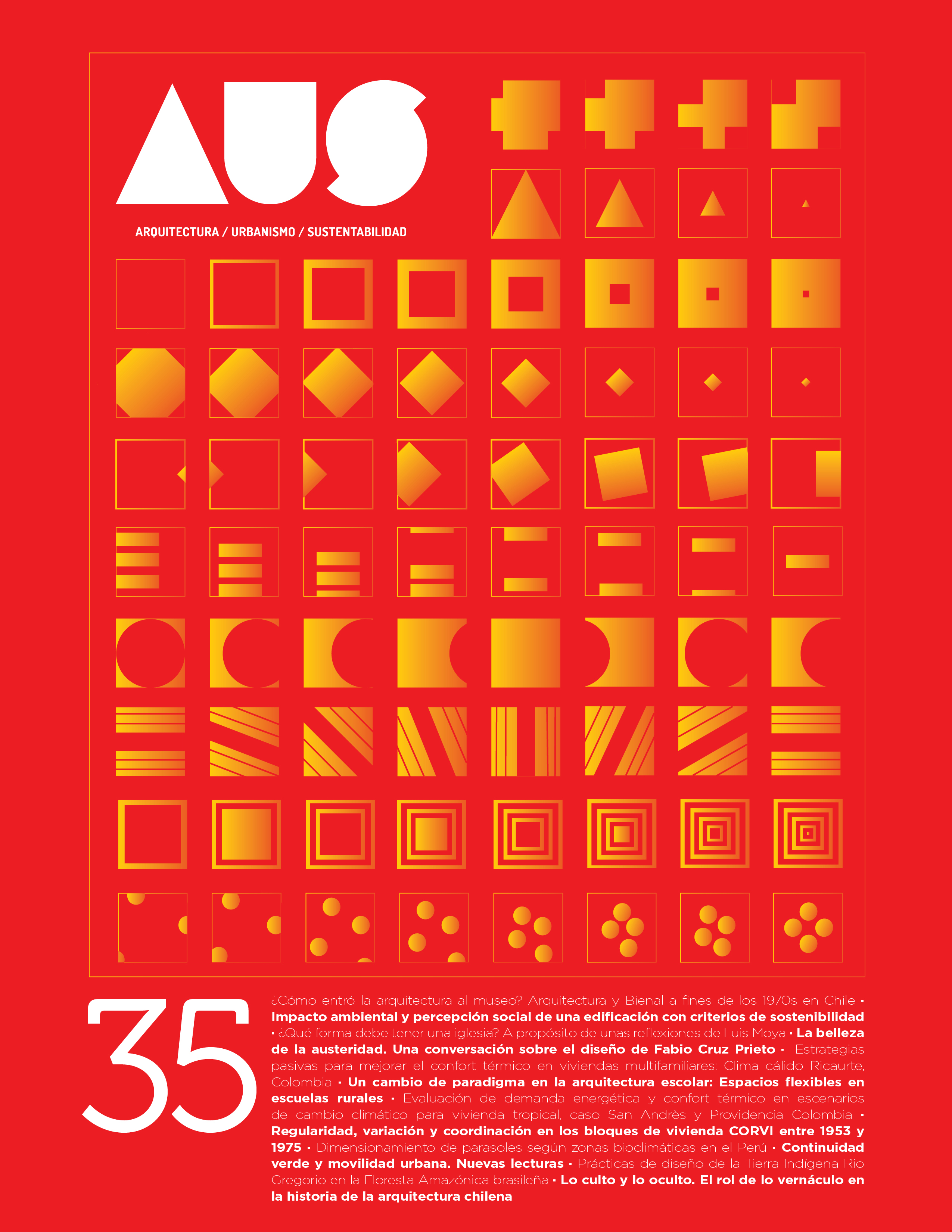Sunshade sizing according to bioclimatic zones in Peru
Main Article Content
Abstract
External solar protection is one of the most important bioclimatic strategies in hot and temperate climates to avoid indoor overheating and the consequent thermal discomfort for dwellers. This document aims to objectively identify the times of the year and of the day when solar protection should be considered, depending on the building’s climate and location latitude in Peru. In addition to identifying ideal orientations and helping in sunshade sizing, the procedure has evidenced the need to recover the shading culture in the window openings in a particularly diverse and singular setting such as the Peruvian territory.
Article Details
References
Agüero, R. (2009). El balcón y la celosía, elementos de confort lumínico y térmico en el clima de la ciudad de Lima. Tesis de maestría. Universidad Politécnica de Cataluña.
Al-Tamimi, N. y Fadzil, S. (2011). The potential of shading devices for temperature reduction in high-rise residential buildings in the tropics. Procedia Engineering 21: 273-282. https://doi.org/10.1016/j.proeng.2011.11.2015.
Brown, G. Z., y DeKay M. (2013). Sun, wind, and light. New York: Wiley.
Campbell, G. S., y Norman J.M. (2000). An introduction to environmental biophysics. Springer Science & Business Media.
De Dear, R., y Brager G.S. (1998). Developing an adaptive model of thermal comfort and preference. UC Berkeley: Center for the Built Environment. https://escholarship.org/uc/item/4qq2p9c6.
Evola, G., Gullo F., y Marletta L. (2017). The role of shading devices to improve thermal and visual comfort in existing glazed buildings. Energy Procedia 134: 346-355. https://doi.org/10.1016/j.egypro.2017.09.543.
Givoni, B. (1998). Climate considerations in building and urban design. John Wiley & Sons.
Humphreys, M., Nicol F., y Roaf S. (2015). Adaptive thermal comfort: foundations and analysis. Routledge. https://doi.org/10.4324/9781315765815.
Kirimtat A., Koyunbaba B., Chatzikonstantinou I., Sariyildiz S. (2016). Review of simulation modeling for shading devices in buildings. Renewable and Sustainable Energy Reviews 53: 23-49. https://doi.org/10.1016/j.rser.2015.08.020.
Lechner, N. y Andrasik P. (2021). Heating, Cooling, Lighting: Sustainable Design Strategies Towards Net Zero Architecture. John Wiley & Sons.
Ministerio de Vivienda, Construcción y Saneamiento. (2014). “Norma EM. 110 Confort Térmico y Lumínico con Eficiencia Energética”. Reglamento Nacional de Edificaciones. Lima, Perú.
Ministerio del Ambiente. Servicio Nacional de Meteorología e Hidrología (SENAMHI). (2022). Datos hidrometeorológicos a nivel nacional. Lima, Perú. https://www.senamhi.gob.pe/?&p=estaciones.
Miró Quesada, L. (2003). Introducción a la teoría del diseño arquitectónico. Editorial El Comercio S.A.
Nicol, J. F. y Humphreys M. A. (2002). Adaptive thermal comfort and sustainable thermal standards for buildings. Energy and buildings 34.6: 563-572. https://doi.org/10.1016/S0378-7788(02)00006-3.
Olgyay, V. (2015). Design with Climate. Princeton University Press.
Paricio, I. (1999). La protección solar. Cuadernos Bisagra. Institut de Tecnologia de la Construcció de Catalunya - ITeC.
Reinhart, C. (2014). Daylighting Handbook Volume I: Fundamentals Designing with the Sun. Building Technology Press.
Serra Florensa, R. y Coch Roura H. (2004). Arquitectura y energía natural. Vol. 17. Universitat Politècnica de Catalunya. Iniciativa Digital Politècnica.
Szokolay, S. V. (1996). Solar geometry. PLEA.
Szokolay, S. V. (2014). Introduction to architectural science: the basis of sustainable design. Routledge, https://doi.org/10.4324/9780080473130.
Valladares-Rendón, L. G., Schmid G. y Lo S.L.. (2017). Review on energy savings by solar control techniques and optimal building orientation for the strategic placement of façade shading systems. Energy and Buildings 140: 458-479. https://doi.org/10.1016/j.enbuild.2016.12.073.
Wieser Rey, M. (2011). Consideraciones bioclimáticas en el diseño arquitectónico: el caso peruano. PUCP.


 https://orcid.org/0000-0002-4556-3507
https://orcid.org/0000-0002-4556-3507